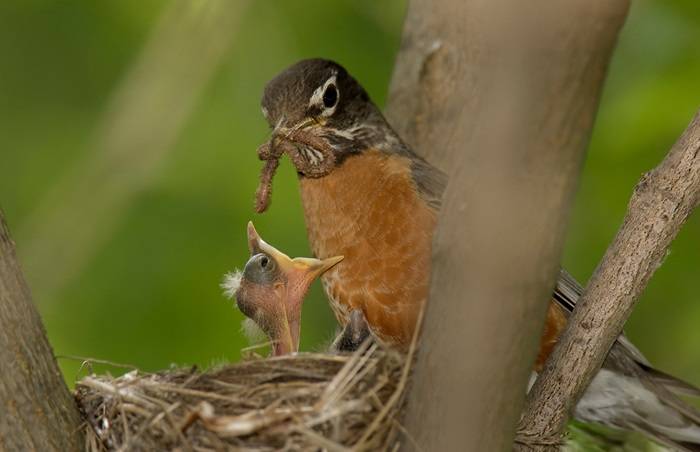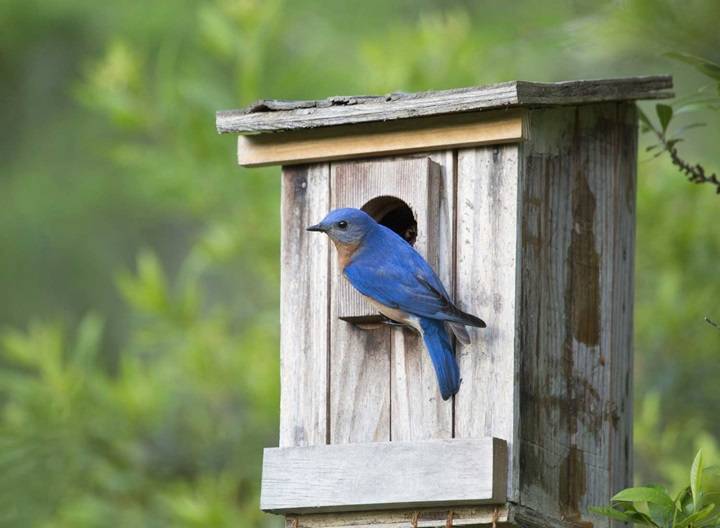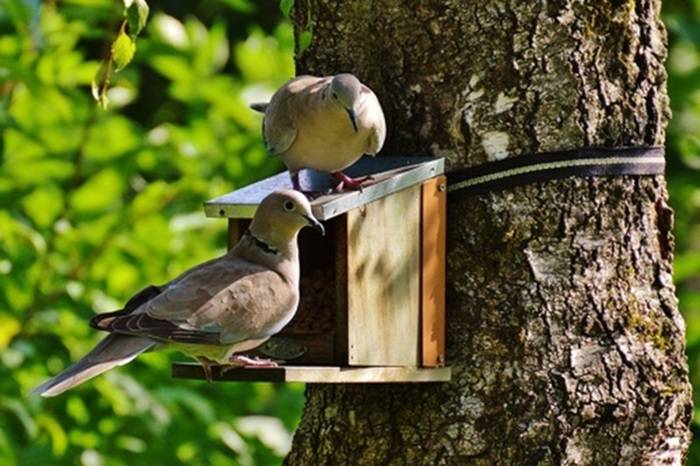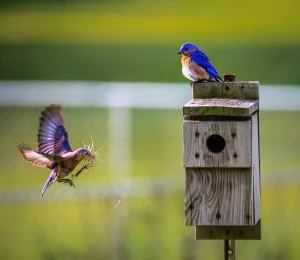Birdhouses, also known as nesting boxes, serve as crucial shelters for various bird species, providing them with safe havens to breed and raise their young. While constructing or selecting a birdhouse, one often overlooked aspect is the size of the entrance hole. Surprisingly, the diameter of the hole can significantly impact which bird species will inhabit the birdhouse. In this comprehensive guide, we’ll delve into the importance of birdhouse hole size, how it affects different bird species, and how you can choose the optimal dimensions to attract specific birds to your backyard.
Understanding Bird Behavior
Birds exhibit diverse behaviors when it comes to selecting nesting sites. Some species prefer secluded locations, while others are more adaptable and may nest in urban environments. Understanding these behaviors is crucial for creating bird-friendly habitats.
Factors Influencing Nesting Preferences

Species Specificity
Certain bird species have specific requirements when it comes to the dimensions of the nesting hole. For example, the Eastern Bluebird (Sialia sialis) prefers entrance holes with diameters ranging from 1½ to 1¾ inches, while the House Wren (Troglodytes aedon) favors smaller holes measuring around 1 inch.
Predation Risk
The size of the entrance hole can influence the vulnerability of nesting birds to predators. A hole that is too large may allow larger predators to access the nest, putting eggs and chicks at risk.
Competition
In areas with high bird populations, competition for nesting sites can be intense. Birds may select nests based on the size of the entrance hole to minimize competition and maximize breeding success.
Optimal Hole Sizes for Common Bird Species
Eastern Bluebird (Sialia sialis)
- Ideal Hole Diameter: 1½ to 1¾ inches
- Reasoning: Bluebirds prefer slightly larger entrance holes to accommodate their size while keeping out larger predators.
House Wren (Troglodytes aedon)
- Ideal Hole Diameter: 1 inch
- Reasoning: House wrens are small birds that prefer tight, secure nesting spaces to deter predators.
Chickadees (Paridae Family)
- Ideal Hole Diameter: 1⅛ inches
- Reasoning: Chickadees seek nesting sites with moderate-sized holes, providing a balance between security and accessibility.
Woodpeckers (Picidae Family)
- Ideal Hole Diameter: Variable (species-dependent)
- Reasoning: Different woodpecker species have varying preferences for nesting hole sizes, ranging from small to large diameters.
Choosing the Right Birdhouse Hole Size
Selecting the appropriate hole size for your birdhouse is crucial for attracting your desired avian visitors. Here’s how you can ensure you get it right:
Research Local Bird Species
Before installing a birdhouse, research the bird species native to your area and their nesting preferences. Understanding which birds frequent your region will help you tailor the hole size accordingly.
Consult Field Guides or Online Resources
Field guides and online resources provide valuable information on bird species and their nesting habits. Look for specific recommendations regarding entrance hole sizes for different bird species.
Consider Predation Risk
Choose a hole size that balances the safety of nesting birds with their accessibility. Avoid excessively large holes that may attract predators, such as squirrels or snakes.
Test Different Hole Sizes
If you’re unsure which hole size to choose, consider experimenting with different diameters. Monitor bird activity around the birdhouse to determine which size attracts the most visitors.
The size of the entrance hole is a critical factor in determining which bird species will inhabit a birdhouse. By understanding the nesting preferences of local bird species and selecting the appropriate hole size, you can create a welcoming environment for feathered friends in your backyard. Whether you’re attracting Eastern Bluebirds, House Wrens, Chickadees, or Woodpeckers, choosing the right hole size is essential for supporting avian biodiversity and enjoying the beauty of birdwatching.
Additional Considerations for Birdhouse Design
In addition to hole size, several other factors contribute to the effectiveness and suitability of a birdhouse for nesting birds. By considering these aspects alongside the dimensions of the entrance hole, you can further enhance the attractiveness and functionality of your birdhouses.
Entrance Hole Placement
While the diameter of the entrance hole is crucial, its placement on the birdhouse can also influence its appeal to nesting birds. Typically, the entrance hole should be positioned above the floor of the nesting chamber to prevent flooding during rainy weather. Placing the hole slightly off-center can provide additional protection against predators and adverse weather conditions.
Nesting Chamber Dimensions
The size of the nesting chamber within the birdhouse should accommodate the specific needs of the target bird species. Different species require varying amounts of space for nesting materials and raising their young. Ensure that the interior dimensions of the birdhouse are suitable for the species you wish to attract, providing enough room for nesting activities without being too spacious, which can attract unwanted avian tenants or predators
Ventilation and Drainage
Proper ventilation and drainage are essential for maintaining a healthy nesting environment within the birdhouse. Adequate ventilation helps regulate temperature and humidity levels, preventing the buildup of moisture that can lead to mold growth or respiratory issues for nesting birds. Similarly, drainage holes or grooves in the floor of the nesting chamber prevent water from accumulating, ensuring that the nest remains dry and comfortable for birds and their offspring.
Material Selection
The choice of materials used to construct the birdhouse can impact its durability, insulation, and attractiveness to nesting birds. Opt for natural, untreated wood, such as cedar or pine, which is both durable and resistant to decay. Avoid using pressure-treated lumber or painted surfaces, as they may contain harmful chemicals that can leach into the environment or deter birds from nesting. Additionally, consider adding insulation or ventilation features to regulate temperature extremes and provide a comfortable nesting environment throughout the year.
Predator Deterrence
Protecting nesting birds and their eggs from predators is essential for maximizing breeding success. Incorporating predator deterrents, such as baffles, predator guards, or sloped roofs, can help deter climbing predators like snakes, raccoons, or cats. Additionally, positioning birdhouses away from dense vegetation or other potential hiding spots for predators can reduce the risk of nest predation and increase the likelihood of successful fledging for nesting birds.
Maintenance and Monitoring
Regular maintenance and monitoring are critical for ensuring the continued effectiveness and safety of birdhouses. Inspect birdhouses periodically for signs of wear, damage, or occupation by unwanted species. Clean out old nesting materials between breeding seasons to prevent the buildup of parasites or pathogens that can harm nesting birds. By actively monitoring and maintaining birdhouses, you can create a welcoming and supportive habitat for nesting birds while minimizing potential risks to their health and safety.
Importance of Birdhouse Hole Size
Related Post:
Cracking the Mystery: How Long Does It Take for Duck Eggs to Hatch?
Unlocking the Egg-Laying Mystery: When Do Ducks Start Laying Eggs?
Choosing the Perfect Pet Duck: A Comprehensive Guide
In conclusion, while the size of the entrance hole is a crucial factor in determining the suitability of a birdhouse for nesting birds, several other considerations must be taken into account to optimize its effectiveness and appeal. By carefully designing and maintaining birdhouses to meet the specific needs of target bird species, you can create a welcoming and supportive habitat that encourages avian biodiversity and enhances the enjoyment of birdwatching in your backyard. Whether you’re attracting Eastern Bluebirds, House Wrens, Chickadees, or Woodpeckers, incorporating these additional considerations into your birdhouse design can help maximize breeding success and promote the health and well-being of nesting birds and their offspring.




